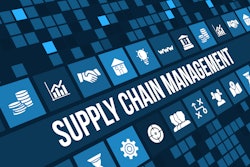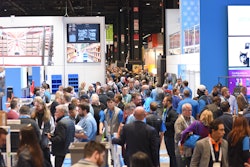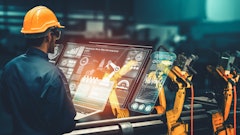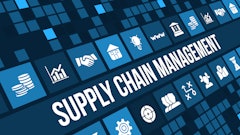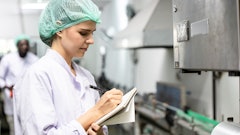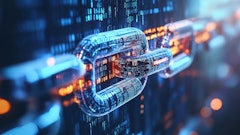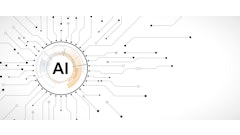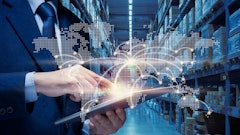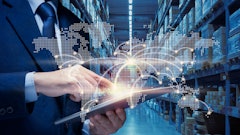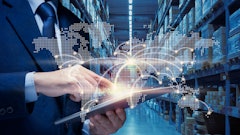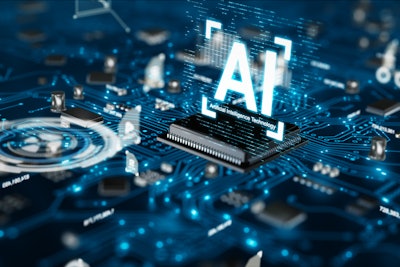
Workers across the supply chain are experiencing a range of intensified life safety threats, including external and internal factors. But there is an evolving line of defense that can greatly strengthen safety initiatives, and that’s artificial intelligence (AI).
Bad actors and criminals are employing new tactics to exploit vulnerabilities in the supply chain, from warehouses to every stop in the journey. Data from CargoNet confirmed a 14% increase in cargo theft across the United States and Canada in Q3 2024 compared to 2023, with more than $39 million worth of goods stolen.
Adding to the impact of these material losses, supply chain personnel are caught in the crosshairs of criminal activity and may decide the risks are no longer worth the employment. There are also innate risks of loading and transporting goods across long distances and the daily hazards they must overcome, especially as they manage greater volumes of goods and peak ordering seasons.
AI is helping to mitigate these risks, with organizations increasingly applying AI to better detect threats and employ proactive deterrence that could prevent interruptions. Let’s examine how AI can help build a more resilient supply chain.
AI in the supply chain
As showcased in the Top Software and Tech Awards 2024, the supply chain is ripe with innovation spanning everything from supply chain visibility and warehouse automation to robotics and procurement or ERP solutions.
Solutions across these categories are being supercharged by AI that is rapidly advancing in its ability to interact in real world scenarios with constantly changing conditions, augment human capabilities to keep us safer, and continually learn from its data to deliver more value than we ever thought possible.
In addition to completing necessary paperwork with great accuracy and sourcing suppliers for procurement teams, here are 5 ways to use AI to bolster safety strategies along the supply chain.
Driver protection
Trucks can be augmented with interior cameras and sensors to monitor a driver’s face and detect if they are distracted, drowsy, or otherwise impaired, giving vocal cues to help prevent accidents from occurring. AI-powered cameras and sensors on the exterior can even monitor road conditions to enable autonomous driving. This mix of driverless technology and driver optimization is making it significantly safer for everyone on the road and reducing the mental strain on drivers.
Incident analysis
If an incident does occur at a warehouse, on the road, or while the vehicle is at a rest stop, video intelligence systems make it easy to gather evidence across a large swatch of recording devices in facilities and on trucks to quickly aggregate footage, learn trends, and build a case if prosecution is the appropriate next step. Some rest stops and warehouses even enable local law enforcement to directly access their video feeds if criminal activity is occurring so law enforcement professionals can act fast with the most information possible to optimize their response.
Inventory moving
Robotics capabilities have greatly streamlined how humans operate potentially dangerous machinery—or have removed humans from harm’s way completely. Intelligent forklifts and similar equipment continually scan the environment to safely move goods across the warehouse. Some solutions are fully automated, like robots that navigate the warehouse entirely on their own with a human stationed safely at a nearby computer to monitor the system and intervene if anything goes wrong.
Inventory tracking
It is common to have overflow lots for warehouses where drivers can take their loads. Truck identification labels can be read by AI-powered cameras to make it easier to track inventory as it flows through the supply chain and quickly identify where shipments are located. Some warehouses even use drones that can navigate the space and scan labels for inventory tracking.
These capabilities extend to tracking cargo ship loads by reading container numbers to provide real-time inventory tracking and staging. If shipments are delayed for any reason, the systems can automatically adjust timelines and provide the necessary information to everyone involved in the next step of the shipment’s journey—without requiring manual human processes.
Video surveillance
Many security cameras offer advanced object recognition and pattern detection that can proactively flag suspicious activity with minimal false alarms. This spans both threat detection and safety adherence, like monitoring if employees are wearing the appropriate personal protective equipment and following safety protocols.
These intelligent cameras make it more scalable and economical for leaders to monitor multiple locations simultaneously at any time, and empower on-the-ground staff to focus their attention to situations as they develop.
Creating safer supply chains
Security is a constantly changing problem, which makes it hard to commit to permanent solutions or rely entirely on human capabilities for 24/7 coverage.
AI technologies, including the infrastructure needed to deploy them, need to be agile and nimble. They need to be turnkey and low maintenance. And they need to be future proof and easy to reconfigure to deliver sustained value.
Supply chain leaders have an opportunity to begin introducing AI and testing its capabilities to unlock tangible benefits and scale their use. Think in incremental steps: Start with the most difficult locations/situations first, and use that experience to build out an effective program.
The safety risks for workers are ever-present. By using AI to augment human coverage and boost efficiency, we can achieve safer supply chains where no individuals are harmed, and no product is stolen.




